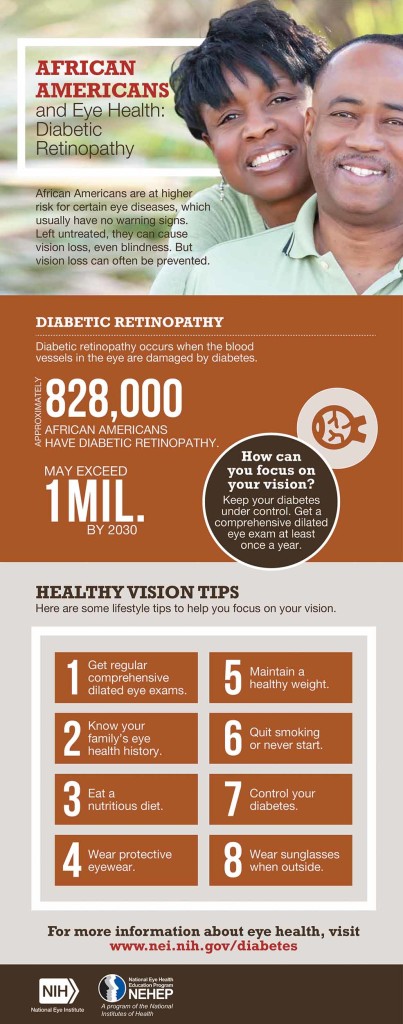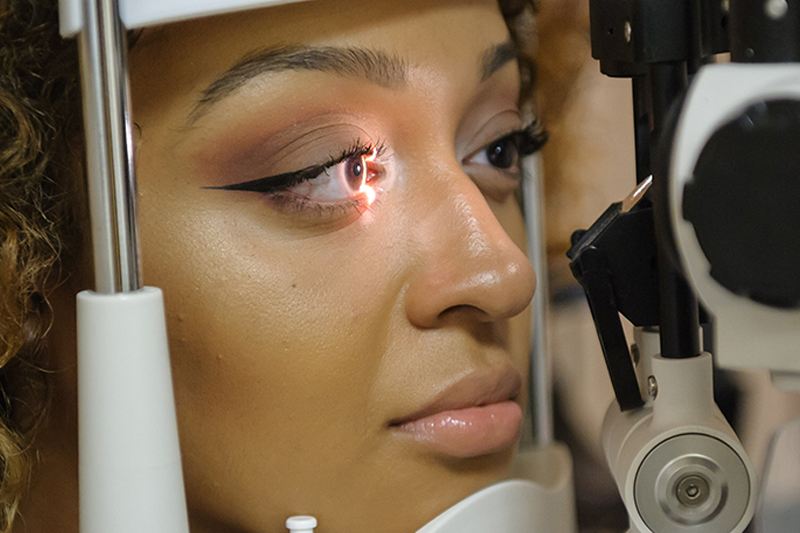You can’t feel it. You can’t see it—until it’s too late. Diabetic retinopathy, the most common form of diabetic eye disease, is the leading cause of blindness in adults age 20–74. It occurs when diabetes damages blood vessels in the retina.
 Diabetic retinopathy affects 7.7 million Americans, and that number is projected to increase to more than 14.6 million people by 2030. Many African Americans are included in these statistics. According to the National Eye Institute (NEI), more than 800,000 African Americans have diabetic retinopathy, and this number is projected to increase to approximately 1.2 million people by 2030.
Diabetic retinopathy affects 7.7 million Americans, and that number is projected to increase to more than 14.6 million people by 2030. Many African Americans are included in these statistics. According to the National Eye Institute (NEI), more than 800,000 African Americans have diabetic retinopathy, and this number is projected to increase to approximately 1.2 million people by 2030.
The longer a person has diabetes, the greater the risk for diabetic eye disease. Once vision is lost, it often cannot be restored.
People with diabetes should have a comprehensive dilated eye exam at least once a year to help protect their sight.
Keeping diabetes in control is key to slowing the progression of vision complications like diabetic retinopathy. There are important steps people with diabetes can take to keep their health on TRACK:
-
Take your medications as prescribed by your doctor.
-
Reach and maintain a healthy weight.
-
Add physical activity to your daily routine.
-
Control your ABC’s —A1C, blood pressure, and cholesterol levels.
-
Kick the smoking habit.








